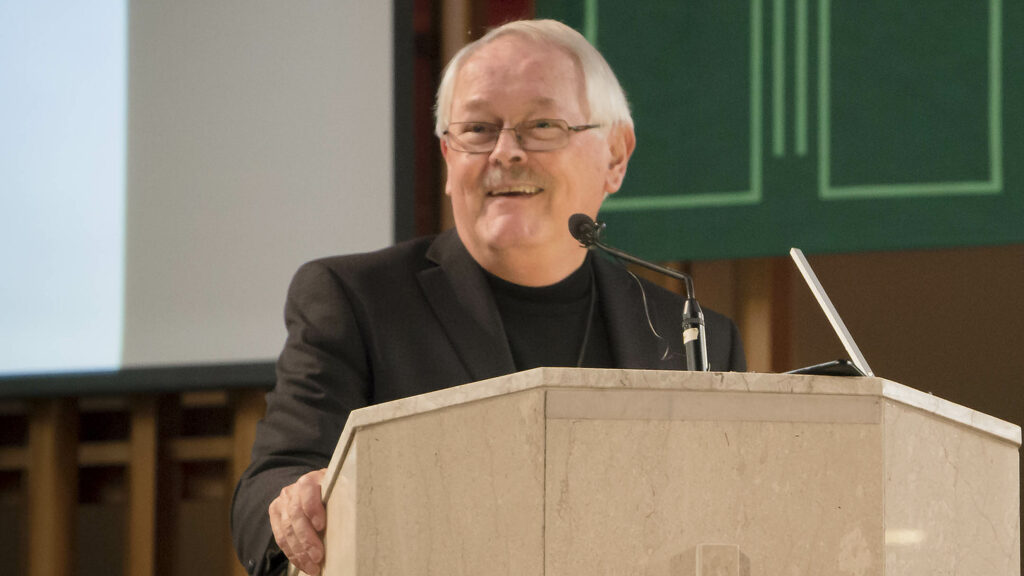If we only prayed when we felt like it, we wouldn’t pray a lot.
Enthusiasm, good feelings, and fervour will not sustain anyone’s prayer life for long, good will and firm intention notwithstanding. Our hearts and minds are complex and promiscuous, wild horses frolicking to their own tunes, with prayer frequently not on their agenda. The renowned mystic, John of the Cross teaches that, after an initial period of fervour in prayer, we will spend the bulk of our years struggling to pray discursively, dealing with boredom and distraction. So, the question becomes, how do we pray at those times when we are tired, distracted, bored, disinterested, and nursing a thousand other things in our heads and in our hearts? How do we pray when little inside us wants to pray? Especially, how do we pray at those moments when we have a positive distaste for prayer?
Monks have secrets worth knowing. The first secret we need to learn from them is the central place of ritual is sustaining a prayer-life. Monks pray a lot and regularly, but they never try to sustain their prayer on the basis of feelings. They sustain it through ritual. Monks pray together seven or eight times a day ritually. They gather in chapel and pray the ritual offices of the church (Matins, Lauds, Prime, Terce, Sext, Vespers, Compline) or they celebrate the Eucharist together. They don’t always go there because they feel like it, they come because they are called to prayer, and then, with their hearts and minds perhaps less than enthusiastic about praying, they pray through the deepest part of themselves, their intention and their will.
In the rule that St. Benedict wrote for monastic life there’s an oft-quoted phrase. A monk’s life, he writes, is to be ruled by the monastic bell. When the monastic bell rings, the monk is immediately to drop whatever he is doing and go to whatever that summons is calling him to, not because he wants to, but because it is time, and time is not our time, it’s God’s time. That’s a valuable secret, particularly as it applies to prayer. We need to go pray regularly, not because we want to, but because it’s time, and when we can’t pray with our hearts and minds, we can still pray through our wills and through our bodies.
Yes, our bodies! We tend to forget that we are not disincarnate angels, pure heart and mind. We are also a body. Thus, when heart and mind struggle to engage in prayer, we can always still pray with our bodies. Classically, we have tried to do this through certain physical gestures and postures (making the sign of the cross, kneeling, raising our hands, joining hands, genuflection, prostration) and we should never underestimate or denigrate the importance of these bodily gestures. Simply put, when we can’t pray in any other way, we can still pray through our bodies. (And, who is to say that a sincere bodily gesture is inferior as a prayer to a gesture of the heart or mind?) Personally, I much admire a particular bodily gesture, bowing down with one’s head to the floor which Muslims do in their prayer. To do that is to have your body say to God, “Irrespective of whatever’s on my mind and in my heart right now, I submit to your omnipotence, your holiness, your love.” Whenever I do meditative prayer alone, normally I end it with this gesture.
Sometimes spiritual writers, catechists, and liturgists have failed us by not making it clear that prayer has different stages – and that affectivity, enthusiasm, fervor are only one stage, and the neophyte stage at that. As the great doctors and mystics of spirituality have universally taught, prayer, like love, goes through three phases. First comes fervour and enthusiasm; next comes the waning of fervor along with dryness and boredom, and finally comes proficiency, an ease, a certain sense of being at home in prayer that does not depend on affectivity and fervour but on a commitment to be present, irrespective of affective feeling.
Dietrich Bonhoeffer used to say this to a couple when officiating at their marriage. Today you are very much in love and believe that your love will sustain your marriage. It won’t. Let your marriage [which is a ritual container] sustain your love. The same can be said about prayer. Fervour and enthusiasm will not sustain your prayer, but ritual can. When we struggle to pray with our minds and our hearts, we can still always pray through our wills and our bodies. Showing up can be prayer enough.
In a recent book, Dearest Sister Wendy, Robert Ellsberg quotes a comment by Michael Leach, who said this in relation to what he was experiencing in having to care long-term for his wife suffering from Alzheimer’s. Falling in love is the easy part; learning to love is the hard part; and living in love is the best part. True too for prayer.
-Rev. Ron Rolheiser, O.M.I. is president of the Oblate School of Theology in San Antonio, Texas. Before taking his current position he taught for many years at Newman Theological College.

